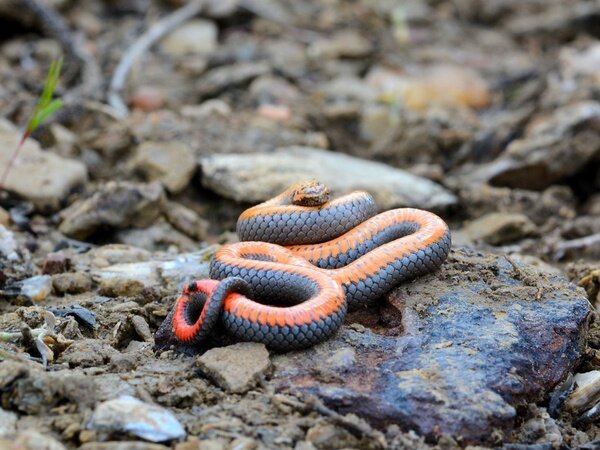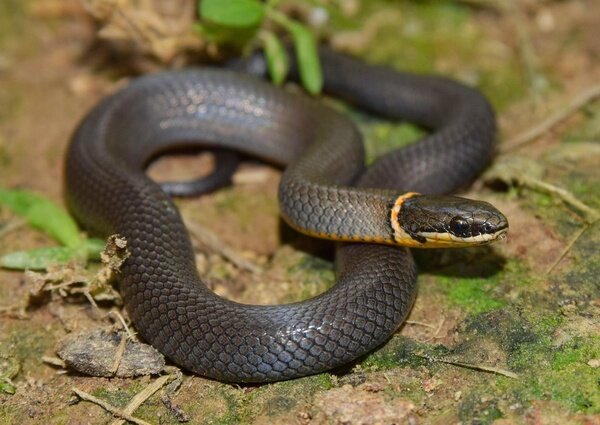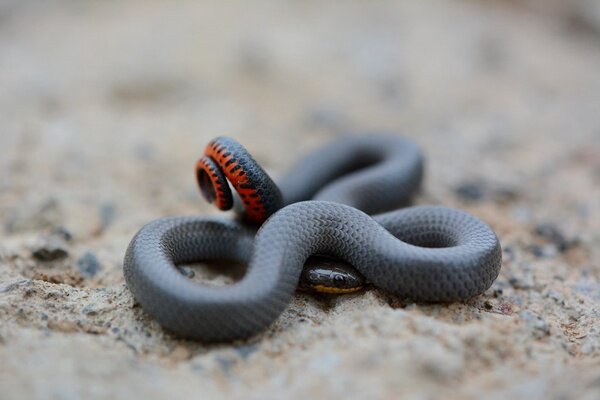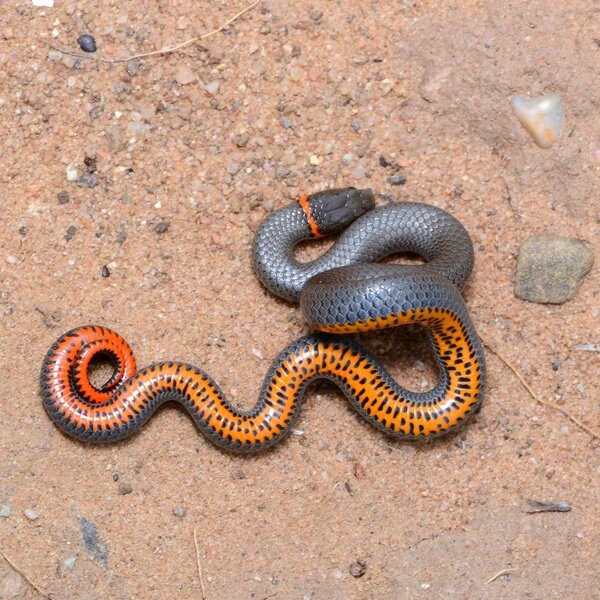Prairie Ring-necked Snake





Kingdom: Animalia Phylum: Chordata Class: Reptilia Order: Squamata Family: Colubridae Genus: Diadophis Species: Diadophis punctatus
Subspecies: Diadophis punctatus stictogenys
The Prairie Ring-necked Snake is just as brightly colored as it is shy and secretive. Although it appears to be a drab dark color from above, its underbelly is an impressive mix of oranges, reds, and yellows. The Prairie Ring-necked Snake is harmless, and when startled or harassed, it turns over its tail, or sometimes its entire body, to reveal these bright colors. Due to its timid nature, it prefers environments with many places to hide such as rocks, fallen trees, and rocky crevices. Because it is a social snake, it sometimes lives communally with other Prairie Ring-necked Snakes. These colonies can grow to have over 100 members. It is nocturnal and is rarely seen out in the open during the day except in the early morning when it can be found basking in the sun.
Conservation status: Least concern
Description: Black-grey head, grey body, and a distinct orange ring around the base of its neck; Yellow underside for one-third of the body, orange underside for the second third, and red for the last third; black flecks across the underside
Size: Ranges from 7 to 14 inches in length
Diet: Insects, frogs, salamanders, other snakes, lizards, and newborn rodents; uses weak venom in its saliva that is not harmful to humans to immobilize prey
Habitat: Prairies; often found sunbathing out in the open; also found under logs and rocks
Defensive behavior: If approached, it will flee but is a slow snake and easily caught; rarely bites, and may play dead by exposing the bright colors of its underbelly; may thrash wildly or musk if handled
Credit source: Animal Diversity Web, University of Michigan